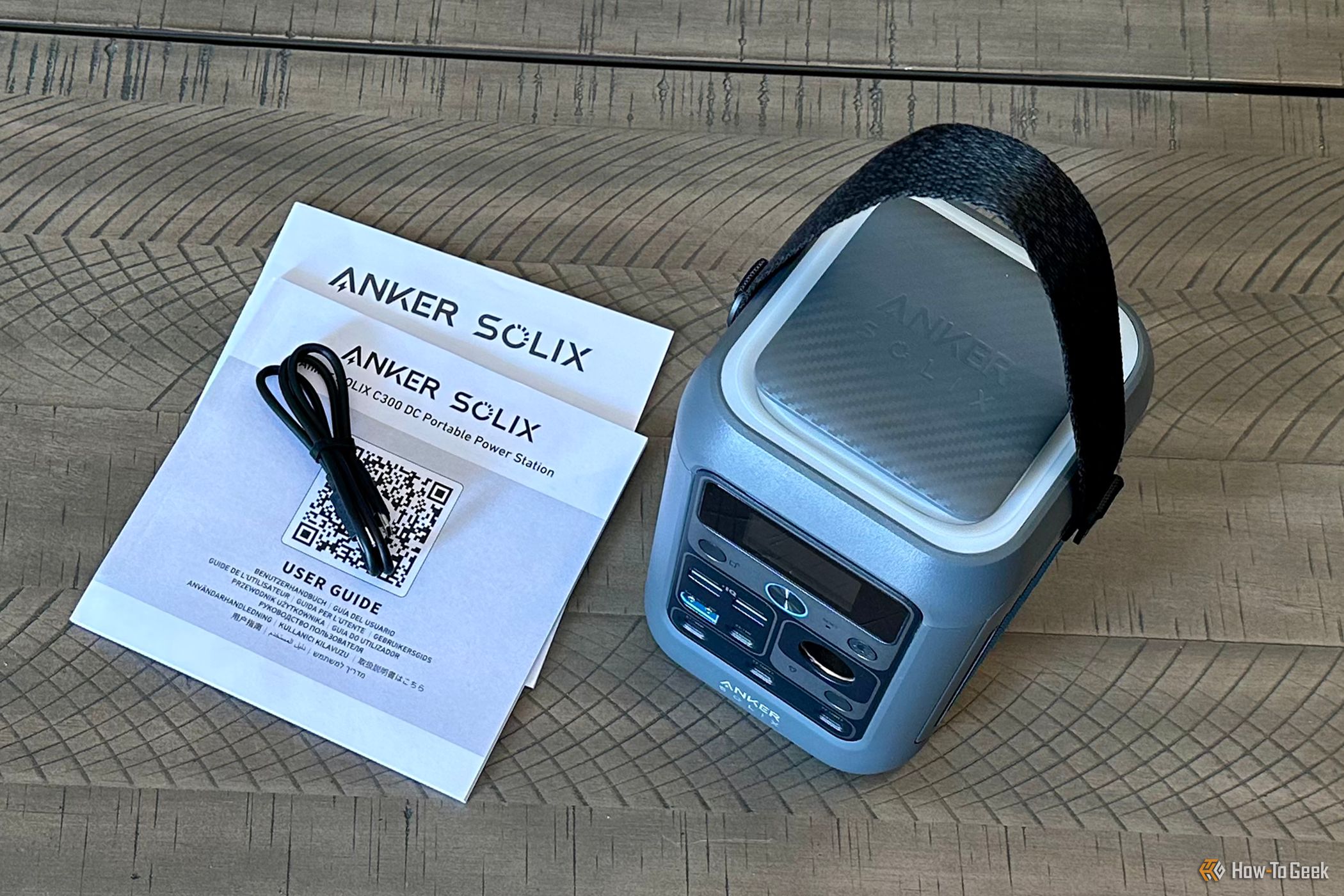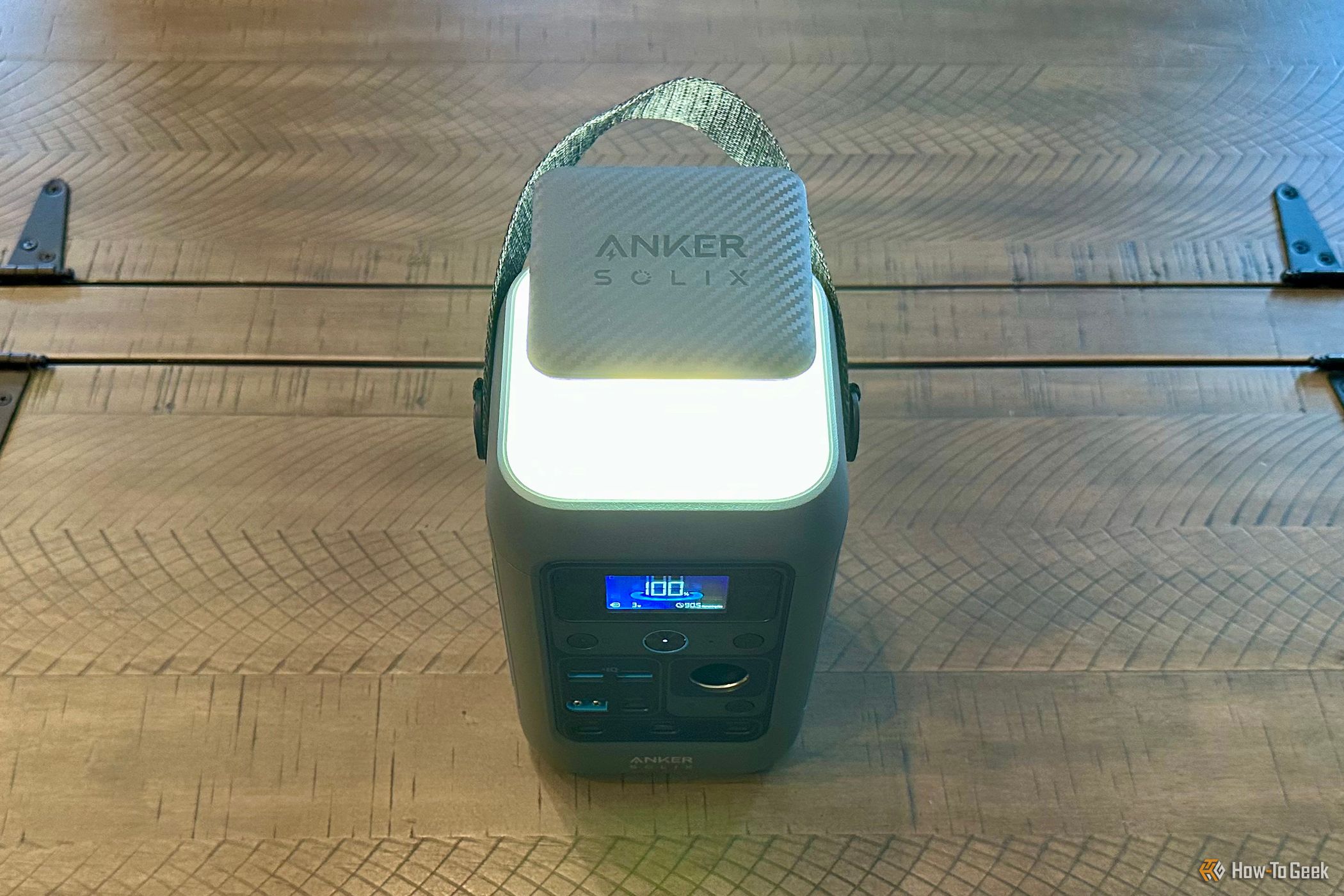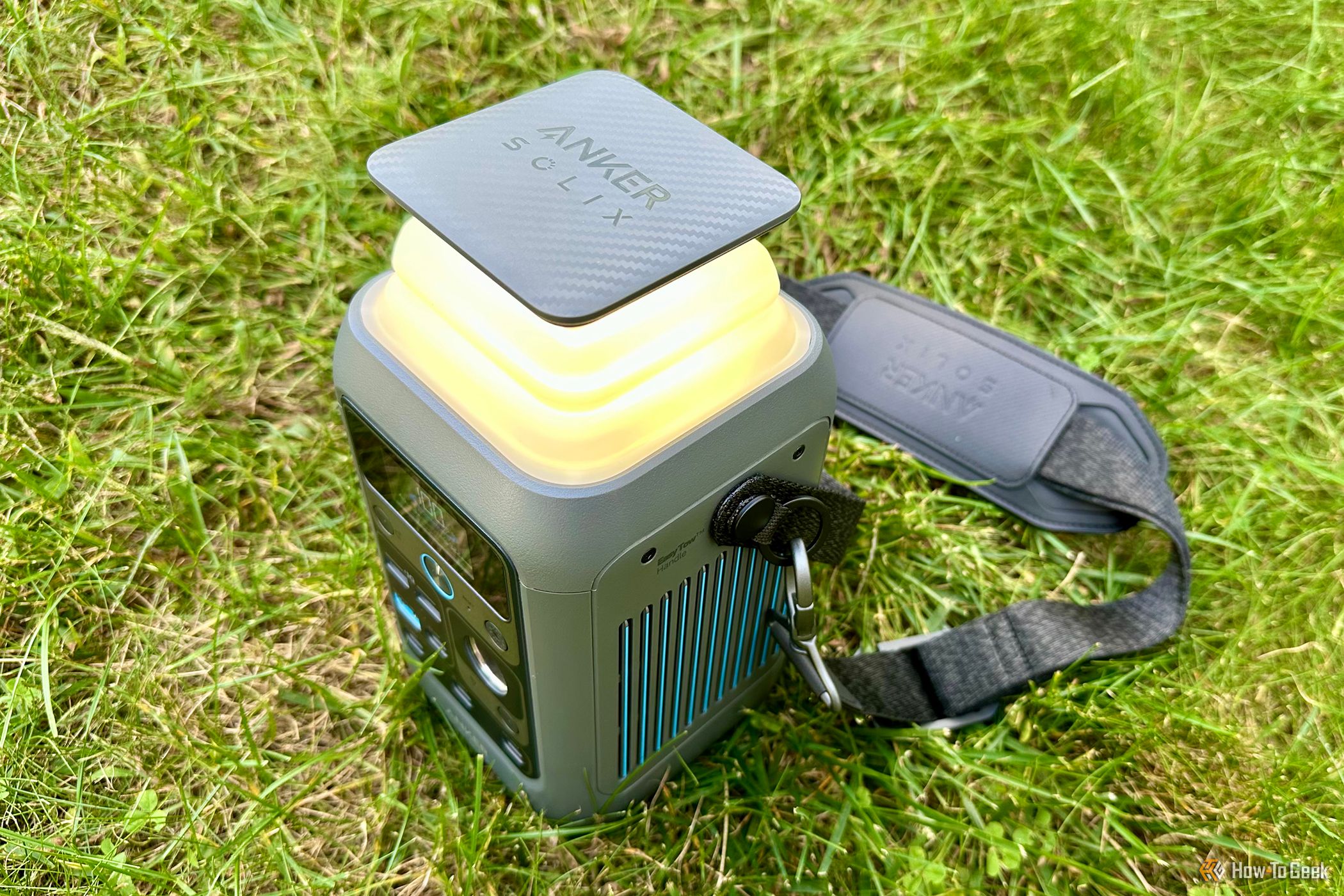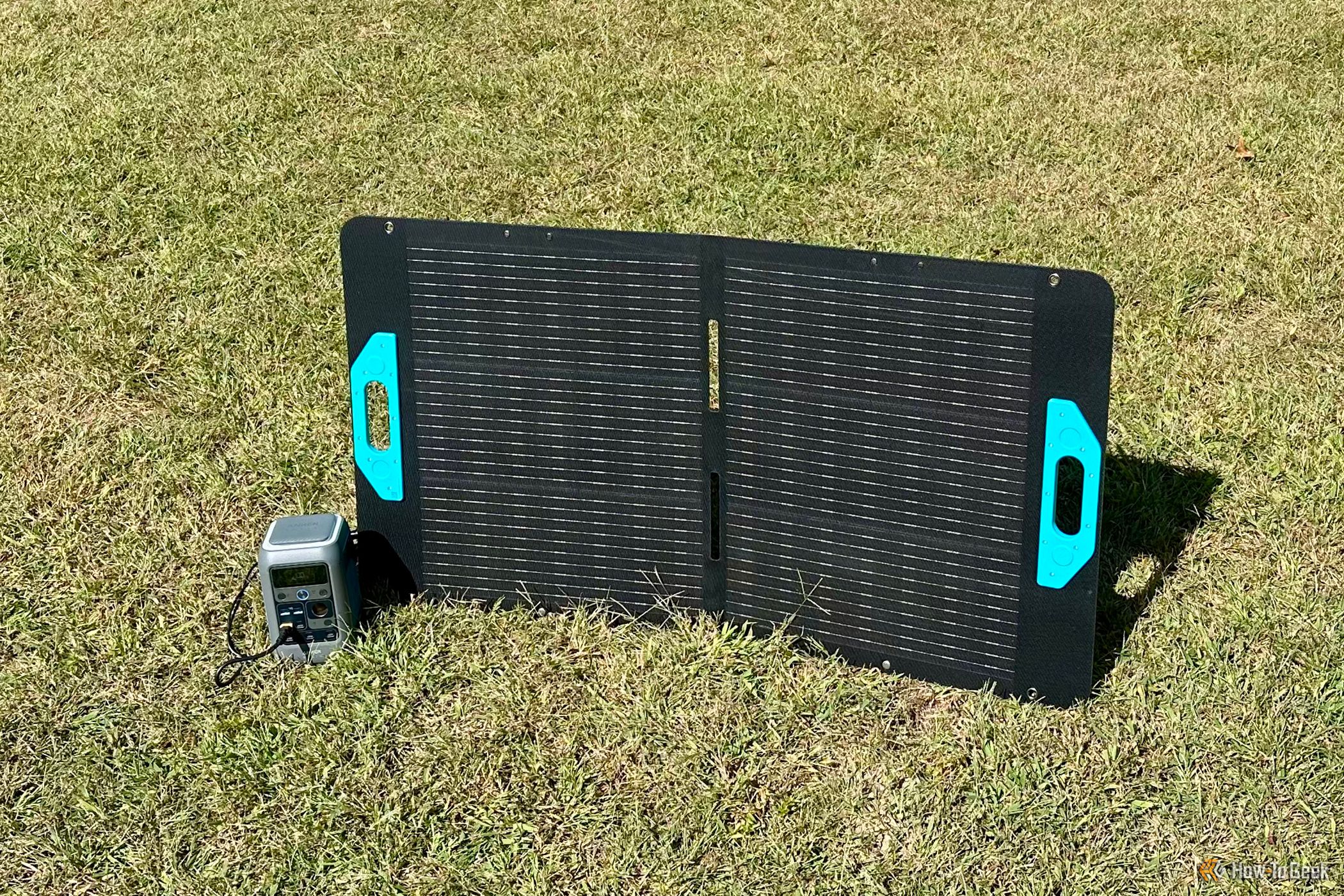Key Takeaways
- The Anker SOLIX C300 DC offers a 90,000mAh battery in a compact body for easy transport.
- The C300 DC can charge multiple devices with up to 300W output.
- The LCD screen and Anker app provide detailed information for connections and battery life.
Portable power stations can provide a backup power source for your laptops, phones, tablets, and more. They’re especially useful for the occasional blackout or camping trip. One challenge, however, is balancing power capacity with size. The Anker SOLIX C300 DC tackles this difficult balancing act with a powerful 90,000mAh 288Wh battery capacity in an easy-to-transport, compact body that weighs just over six pounds, making it a great solution for your USB-powered devices.
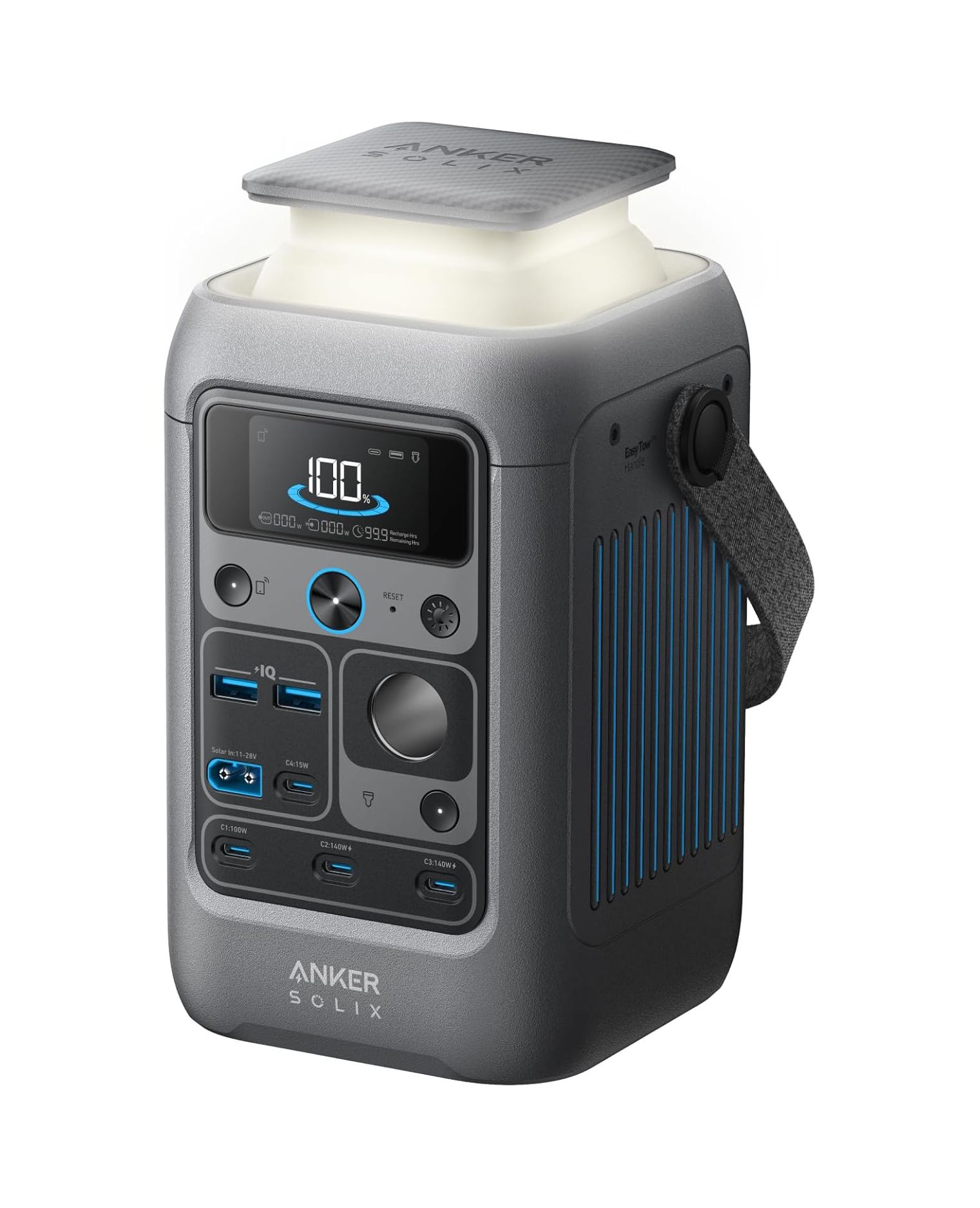

Anker SOLIX C300 DC
The Anker SOLIX C300 DC is a versatile and portable power station with a 288Wh capacity and 300W output. It features multiple charging ports, including two 140W two-way USB-C ports, and can be recharged via an AC outlet, solar panel, or car charger. This makes it perfect for outdoor adventures, travel, and emergency backup power.
- Well-built and compact
- Simultaneous USB-C input for faster charging
- Two USB-A and four USB-C ports
- Car socket outlet
- Built-in pop-out, extendable light
- No charger included
- No AC outlets
- Solar and car charging require separate purchases
Price and Availability
The Anker SOLIX C300 DC is available from Amazon or directly from Anker for $200. It comes with a 2-foot-long 140W max USB-C to USB-C cable and some paperwork. The built-in 90,000mAh 288Wh battery, with a component life of 50,000 hours, is estimated to last for over 3,000 charging cycles before dropping to 80% capacity.
Design and Setup
At roughly five inches per side and eight inches tall, the C300 DC looks and feels like a heavy-duty lantern with curved edges. The built-in nylon strap makes it easy to pick up and go.
Most of the action takes place on the front of the unit, with an LCD screen on top. Just below the LCD screen are an IoT button for Bluetooth and Wi-Fi, a main power button, and a light button. Below the buttons are, on the left half, two 12W USB-A ports, combined solar and car input, and a 15W USB-C output port labeled C4, while, on the right half, is a 100W car socket outlet and car socket outlet on or off button. The lowest block features three USB-C ports, including C1, with 100W output, and C2 and C3, which are each 140W input and output.
At the top of the C300 DC is a retractable light that can be pulled up or pushed down accordion-style to one of two heights or flattened completely. Pressing the light button turns the light on, while pressing it a second and third time makes it brighter. Pressing the light button a fourth time turns the light off.
The initial setup is a bit challenging in that the C300 DC needs to be activated for the first time by charging with an 18W or higher wall charger via the USB-C2 or USB-C3 ports or with a compatible solar panel that has an output voltage range of 11~28V. Neither is included. In my case, I used the USB-C port of the Ugreen Nexode 65W charger with Anker’s included USB-C to USB-C cable.
The C300 DC can also be chargedbut not activated via a car’s output port with an optional XT60-compatible cable. It’s unfortunate that a premium product like this does not come with additional cables, but ultimately, it’s the type of device you’re meant to accessorize for your particular use cases.
You can charge from 0% to 80% in just one hour by using separate 140W PD USB-C chargers connected to both USB-C2 and USB-C3, respectively, which is a nice option for charging in a hurry. You can reach that same 80% mark in two and a half hours by using solar panel or car socket charging. In my own testing, I was able to charge from 50% to 100% in about two and a half hours using 60W of charging plugged into USB-C2.
Usage and Software
The C300 DC is turned on by pressing the main power button for three seconds. Once powered on, the LCD screen displays the remaining battery power in bar graphs and percentages. When charging the C300 DC, the display shows the input power in watts and the time left for a full recharge.
With one or multiple devices connected to any of the USB-A, USB-C, or DC car charger ports, the LCD display provides information on which are in use, the current output power, and the remaining time left on the battery, as well as any warning indicators like overload or high-temperature alerts. The display itself is easily visible indoors and in dark settings, but outdoors in bright light, it’s sometimes hard to find a good viewing angle due to the highly reflective screen cover.
The total output of the C300 DC is up to 300W, with the combined output of USB-A1, USB-A2, and USB-C4, which are treated as one interface, at 20W. If you’re using just one port, USB-A1 or A2 can output 12W, USB-C4 15W, USB-C1 100W, USB-C2 or C3 140W, and the car output 100W.
Once you use more than one port, the upper limit of the 300W output gets distributed. This means, for instance, if you’re using the maximum of five total ports, which is USB-C1, USB-C2, USB-C3, the car charger output, and the combined USB-A1, A2, and C4, 280W is spread out as 30W + 60W + 60W + 100W + 20W, respectively.
While the LCD display provides a good bit of information in a small space, installing the Anker app, available for iPhone and Android, provides even more detail and control. After installing the app on my iPhone and tapping the plus icon, it immediately found the C300 DC, allowing me to connect to the power station via Bluetooth or Wi-Fi, with the latter only supporting 2.4GHz networks. The app provides great insight into every facet of power consumption, including the C300 DC’s thermal load.
Accessories: Even More Mobile and Independent
While on its own, the C300 DC is a great travel companion, there are two official accessories, the Anker SOLIX Adjustable Strap and the Anker SOLIX PS100 Portable Solar Panel, that can make it even better.
The Adjustable Strap attaches to the existing strap hooks and augments, rather than replaces, the existing hand strap. It adjusts between 1.3 and 4.9 feet and even has a built-in bottle opener on the piece that handles adjustments. It’s a high-quality strap that makes it much easier to transport the C300 DC when your hands are full, so it’s a shame it’s a separate purchase.
The PS100 Portable Solar Panel works with several of the company’s other products, including the Anker EverFrost Dual-Zone Powered Cooler 50. It’s not an inexpensive product at $300, but it is an impressive piece of tech.
With an unfolded width of 44 inches and weighing just under 10 pounds, the PS100 Portable Solar Panel generates up to 100W of power. It’s waterproof, easy to angle and plug in, and folds conveniently flat. If you plan on any type of camping trip or suffer from home blackouts, this is a great support tool with a simple plug-and-play connection to the C300 DC’s dedicated combined solar and car input. It’s a great way to extend the C300 DC’s already excellent battery life.
Should You Buy the Anker SOLIX C300 DC?
A tool like the Anker SOLIX C300 DC can prove invaluable in a world of ever-increasing USB-powered devices. It powers just about anything over USB-A, USB-C, or car socket, and has enough intelligent features to monitor battery consumption and safety to make it a smart choice for on-the-go or at-home.
While it doesn’t offer AC power outlets, you lose better portability in that type of extended functionality. It’s not exactly a budget-friendly choice, but the combination of features and build quality creates a compelling value proposition.


Anker SOLIX C300 DC
The Anker SOLIX C300 DC is a versatile and portable power station with a 288Wh capacity and 300W output. It features multiple charging ports, including two 140W two-way USB-C ports, and can be recharged via an AC outlet, solar panel, or car charger. This makes it perfect for outdoor adventures, travel, and emergency backup power.


